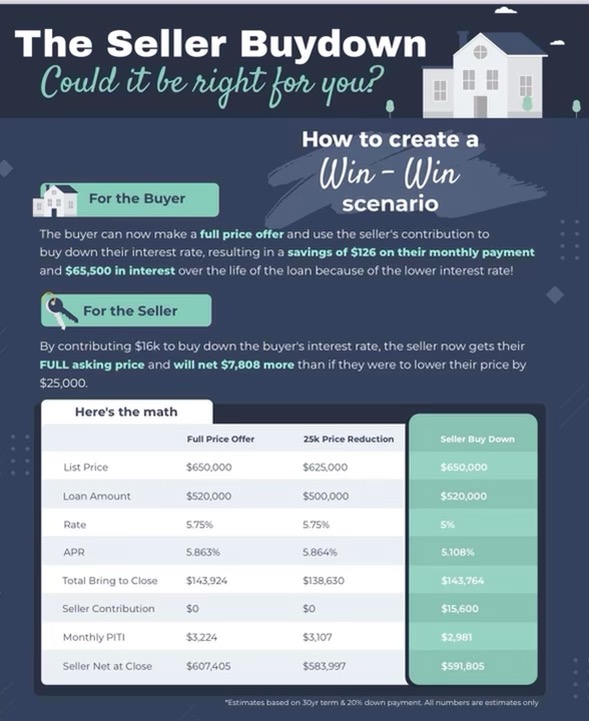Mortgage rates are often considered a key equation in determining whether it’s the right time for a buyer to purchase a home.
Two years of record low rates are now in the rearview mirror, though historically speaking rates remain far more competitive than decades ago — anyone feeling nostalgic about paying 17.6% for a 30-year fixed rate way back in 1982?
Not likely, but folks sure are fond of the 2.6% rate of December 2020.
That said, rates doubling over the past 12 months certainly impacts buying power and ability to qualify for homes that have been in your price range until rates rose so rapidly.
With another rate increase expected this week to follow the Fed’s expected increase in interest rates — costing banks more to borrow, which is then passed onto customers with higher rates — perhaps it’s time to talk about a Seller Buydown with your respective lender, buyer and seller with whom you’re negotiating the sale of a home.
What this means to you:
Especially in a transitional marketplace where buyers have a little more power than they may have had in recent times, a Seller Buydown scenario may make sense for both parties.
With a seller contribution to buy down the rate on your loan, you in effect roll back rates to a more favorable number, the seller realizes more proceeds than a lower purchase price would give them and you get the property you want for a smaller monthly payment. Win-win!
To learn more about this program and access to our preferred lenders who can help you navigate this strategy, please get in touch with us. Thank you so much to Danelle Workman from Fidelity National Title for this graphic and introduction to this timely buyer benefit.
Sharon Currie (Sh****@Be***********.com) is a Realtor and operations manager for the Betsy Hamilton Real Estate Team. Mortgage rates source: Freddie Mac.

